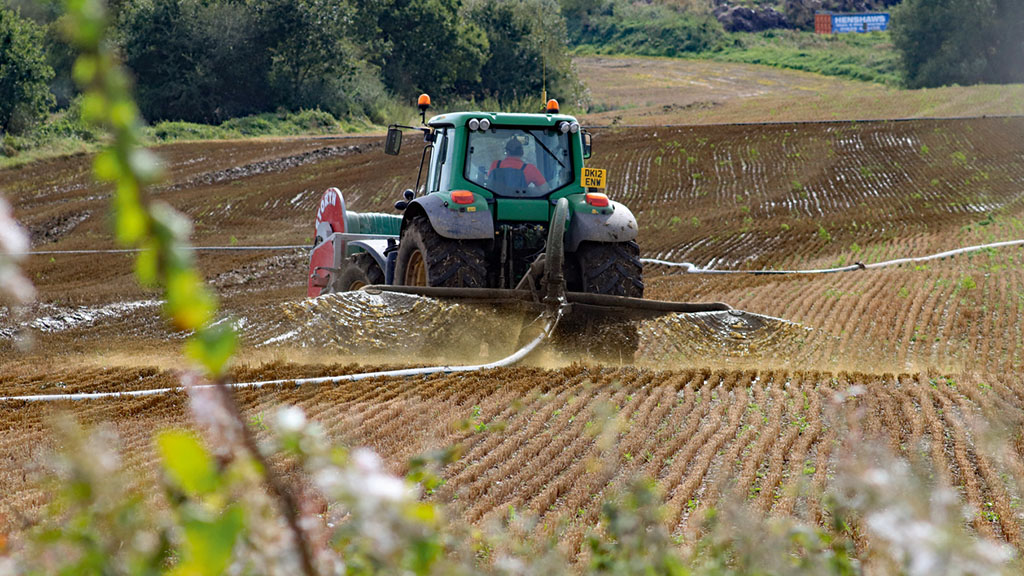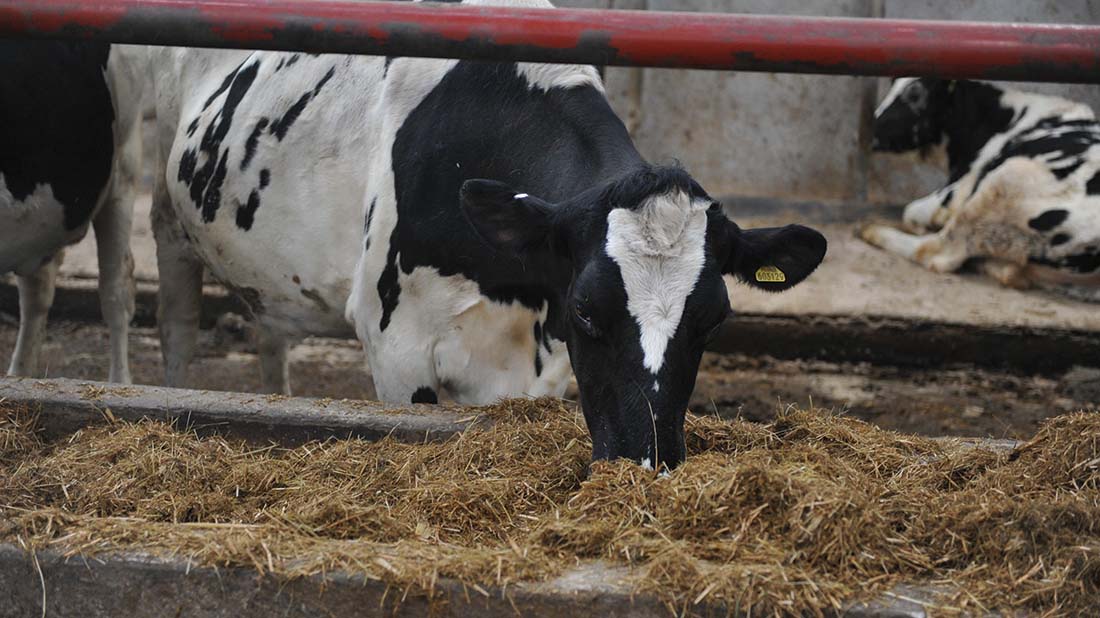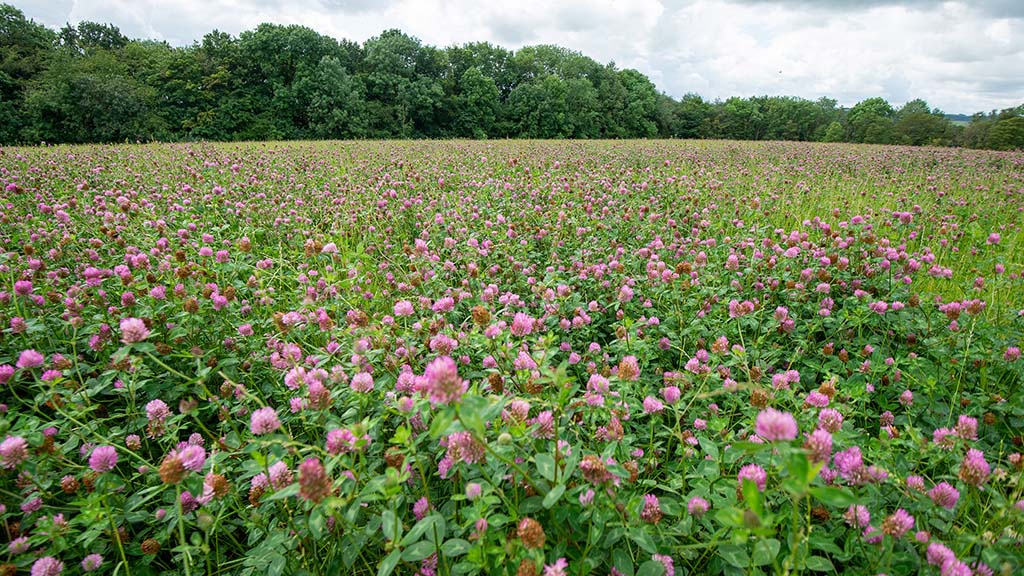Attention to detail pays when making silage
01 May 2023
Our latest Campaign for Better Silage article expresses the importance of paying attention to detail and timeliness when making the best silage, especially with applications of slurry and fertiliser. Philip Cosgrave of Yara says: “Slurry should be applied soon after harvesting and ahead of fertiliser.
Philip Cosgrave of Yara says: “Slurry should be applied soon after harvesting and ahead of fertiliser.
A minimum of a week should be left between applications to minimise nitrous oxide emissions.
If no slurry is available, fertiliser should be spread immediately.
Where nutrient applications are delayed a week, there will be a yield penalty of 5%.” Slurry should be applied using low-emission spreading equipment, such as a trailing shoe or hose, Mr Cosgrave says.
He says: “This keeps slurry contamination on grass to a minimum, but exercise caution with these methods if the cutting interval is tight or slurry is thick.
Applying slurry in a different direction to previous applications prevents slurry residues building up at the base of the sward.
When applying nitrogen fertiliser, always choose a product which contains sulphur because of the benefits it brings to yield and grass quality. “A product such as Yara Mila NK Sulphur is ideally suited to making up potash shortfalls.”
Trade-off
Whether making multi-cut or conventional silage, Volac’s Peter Smith urges farmers to cut early in response to grass growth and weather, rather than the calendar date. He says: “Cutting before heading is critical.
Once grass has gone to head, for everyday cutting is delayed, quality falls by 0.5 D units, which is equivalent to 1.5 litres of milk per cow per day, if cutting is delayed by one week.”
Achieving the optimum dry matter (DM) while keeping wilting times short is a fine balance, he says. “After mowing, grass continues respiring and can burn up around onefifth of its sugar in the first 24 hours.
Wilting to 28-32% DM reduces effluent risk and remaining sugars will be concentrated to aid fermentation.
“Once harvested, ensiling promptly and rolling effectively to remove air will allow fermentation to start sooner, ensuring more sugars are retained.
Using an additive, such as Ecosyl 100, is proven to save sugars leading to improved intakes and animal performance.

Consistency
Correct setup of the mower, tedder and rake is essential to avoid inconsistency in chop length, insufficient conditioning and contamination.
This is according to Paul Niell, of Krone, who advises farmers to aim for a stubble length of 10cm.
He says: “Whether making silage in a conventional or multi-cut system, you are looking for a rapid wilt.
A wide box-shaped swath is desirable to aid in picking up and to allow fast, even drying of the grass.
Set the conditioning plates at the most aggressive setting for young, leafy grass on a multi-cut system.
Ted out the grass as soon as possible, as if it sits in the swath, the top layer will start to dry out, leading to inconsistent DM values in the silage
“When first tedding the cut grass, set the tedder at the steepest pitch. If tedding the crop a second time, the angle could be flattened.”
Farmers should decide on the most suitable chop length following a discussion with their nutritionist, Mr Neill suggests, but achieving a consistent length is vital.
He says: “The blades on the harvesting equipment must be sharp and properly prepared ahead of cutting to ensure a uniform length to allow consolidation in the clamp.”
Clover
White and red clover will fix up to 180kg of nitrogen per hectare per year (72kg N/acre/year), saving on fertiliser costs, John Spence of Limagrain UK says.
Drilling or broadcasting clover see into a grass ley is an effective way of introducing it into a sward, but ensure the clover is not out-competed by grass. “Sow clover in May or June when the soil temperature is above 10degC.
Drilling or broadcasting seed after first cut silage can work well, but harrow first to expose as much soil as possible to maximise seed-to-soil contact.
“Red or large leaved white clovers yield more in silage leys but are less persistent than smaller leaved varieties, typically lasting three years.
“Limagrain mixtures include a blend of clover varieties which give consistent yields throughout the season.
“Clover seed is exceptionally small and difficult to broadcast or drill, so a pelleted clover product, such as Clover Plus, helps because it is twice the weight of untreated seed.
“It is also coated with a nutrient treatment, Headstart Gold, which protects the seed until there is enough moisture for germination.”
WATCH >> Launch panel video from LAMMA 2023